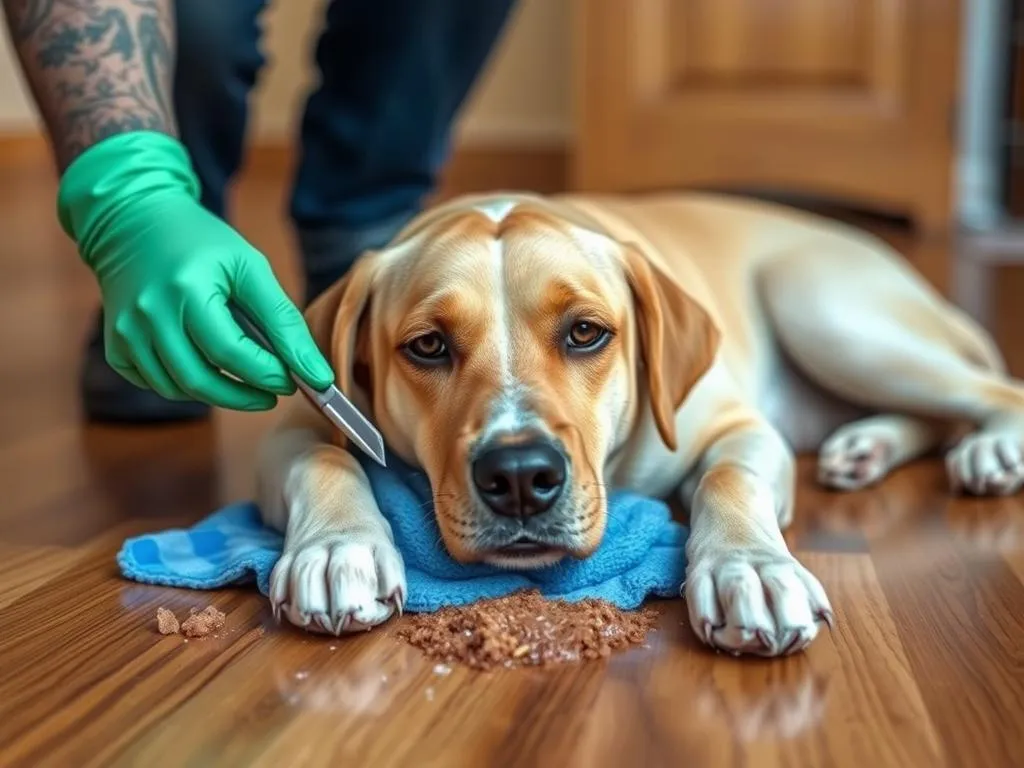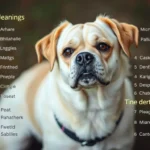
Dealing with pet messes can be a daunting task, especially when it comes to how to clean dog vomit on hardwood floors. Hardwood surfaces can be particularly challenging due to their susceptibility to stains and odors. When your furry friend has an accident, swift action is essential to protect your beautiful floors and maintain a clean home.
Cleaning up dog vomit is not just about aesthetics; it’s also important for the health and safety of your pet and family. Let’s dive into the details of effectively tackling this unpleasant task.
Understanding Dog Vomit and Its Implications
Composition of Dog Vomit
Dog vomit can vary significantly based on what your pet has eaten. Common components include undigested food, bile, and occasionally, grass or other foreign materials. The mixture can produce unpleasant odors and leave behind stubborn stains if not cleaned promptly.
Why Quick Cleanup Matters
Addressing dog vomit quickly is crucial for several reasons:
- Prevention of Permanent Stains: The longer the vomit sits, the more likely it is to stain the hardwood.
- Avoiding Lingering Odors: Quick action helps eliminate odors before they permeate the wood.
- Protecting Hardwood Finishes: Many cleaning solutions can damage the finish of hardwood floors, so prompt cleaning minimizes this risk.
Preparing for Cleanup
Gather Necessary Supplies
Before you start the cleanup process, gather the necessary supplies:
- Paper towels or absorbent cloths
- Disposable gloves
- An enzymatic cleaner specifically designed for pet messes
- White vinegar (for a homemade solution)
- Baking soda (optional, for odor control)
- A soft cloth or sponge
Safety Precautions
When cleaning up pet messes, it’s important to prioritize safety:
- Wear gloves and masks to protect yourself from germs and odors.
- Ensure that your pet is in a safe area away from where you’re cleaning, as some cleaning products can be harmful to them.
Step-by-Step Cleaning Process
Initial Assessment
Start by inspecting the vomit to determine the size and type. This assessment will help you decide which cleaning method is best suited for the situation.
Immediate Cleanup
- Remove Solid Pieces: Use a paper towel to gently pick up any solid pieces. Be careful not to spread the mess further.
- Blot the Area: Instead of wiping, which can push the vomit deeper into the wood, blot the area to absorb as much liquid as possible.
Cleaning the Stain
Now that you’ve done the initial cleanup, it’s time to tackle the stain:
- Apply a Cleaning Solution: Use an enzymatic cleaner as it breaks down the proteins in the vomit, making it easier to clean. If you prefer a homemade solution, mix equal parts of white vinegar and water.
- Scrub Gently: Using a soft cloth or sponge, scrub the area gently. Avoid aggressive scrubbing, which can scratch the hardwood surface.
Dealing with Odors
- Odor Removal: After cleaning, sprinkle baking soda over the area to neutralize any remaining odors. Let it sit for a few hours or overnight, then vacuum it up.
- Ensure Thorough Drying: After cleaning, make sure the area is thoroughly dried to avoid any moisture damage to the wood.
Dealing with Stubborn Stains
Assessing Residual Stains
After your initial cleaning, check for any lingering stains. If the discoloration persists, you may need to take further action.
Advanced Cleaning Techniques
- Specialized Hardwood Floor Cleaners: Look for cleaners specifically formulated for hardwood floors that can safely remove tough stains.
- Professional Cleaning Options: If the stain remains stubborn, consider hiring a professional cleaning service that specializes in hardwood floors.
Preventing Future Incidents
Regular Cleaning and Maintenance
Routine care of your hardwood floors can help maintain their appearance and durability. Regularly sweep and mop with a manufacturer-approved cleaner to keep your floors in top shape.
Monitoring Your Dog’s Health
If your dog is frequently vomiting, it’s essential to consult your vet. This could indicate underlying health issues that need to be addressed. Additionally, consider adjusting your pet’s diet to prevent future incidents.
Conclusion
Cleaning up dog vomit from hardwood floors doesn’t have to be a nightmare. By acting quickly and using the right techniques, you can protect your investment and keep your home clean. Remember to monitor your pet’s health and maintain routine cleaning practices to prevent future messes. Staying proactive in both cleaning and caring for your furry friend will result in a happier home for everyone.
FAQs
What should I do if the vomit has dried?
If the vomit has dried, first scrape off any solid pieces carefully. Then, dampen the area with warm water to soften the residue. Follow the same cleaning steps, using an enzymatic cleaner for best results.
Can I use bleach on hardwood floors?
No, using bleach on hardwood floors is not recommended as it can damage the finish and discolor the wood. Stick to cleaners specifically designed for hardwood or homemade solutions like vinegar and water.
How can I remove the smell completely?
To eliminate odors, use baking soda after cleaning, as it absorbs smells. You can also leave a bowl of vinegar in the area overnight to help neutralize any lingering odors.
Are there any specific products I should avoid?
Avoid harsh chemicals, bleach, or ammonia-based cleaners, as these can damage the finish of your hardwood floors. Always opt for pet-safe and hardwood-friendly cleaning products.
In conclusion, knowing how to clean dog vomit on hardwood is essential for any pet owner. By following the outlined steps and maintaining a proactive approach, you ensure your home remains clean and welcoming for both pets and people.









